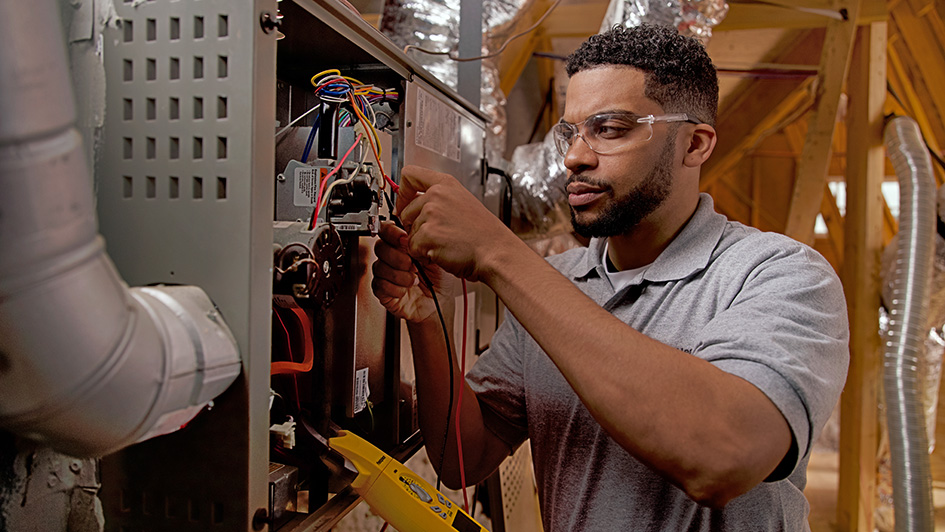
A furnace is often a background player for your home, ensuring you're warm in the cold winter months. It regularly doesn’t get noticed until something goes wrong.
One source might be that your furnace has a cracked heat exchanger. It’s a potentially dangerous issue, so it’s important to know the evidence of a cracked heat exchanger and what you should do if you believe that might be the problem.
What Is a Heat Exchanger in a Furnace?
A heat exchanger transfers heat from the combustion chamber inside your furnace to the air that moves inside the ventilation. It generally accomplishes this through coils or tubes that warm the air while functioning as a barrier to keep byproducts produced in the combustion chamber, called flue gasses, from getting out into your home.
Is a Cracked Heat Exchanger Dangerous?
Given its important role, it isn't surprising that a broken heat exchanger can be hazardous. A damaged heat exchanger can permit dangerous gasses – such as carbon monoxide, which can be lethal – to be distributed throughout your home.
For obvious reasons, do NOT turn on your heater if you suspect there's a crack in the heat exchanger, as doing so could make your entire family ill. Reach out to an HVAC professional immediately if you believe your heating has a cracked heat exchanger that needs repair.
Four Warning Signs of a Cracked Heat Exchanger:
- Furnace shuts off: A crack in your heat exchanger could cause your furnace to shut off.
- Strange Smells: If the air coming out of your furnace has an intense chemical odor, it may be an indicator that gas is seeping through cracks in your heat exchanger. These gasses, which can smell like formaldehyde, are a common warning sign.
- Carbon monoxide alarm is triggered or you feel poisoning symptoms: If a cracked heat exchanger is emitting carbon monoxide in your home, your carbon monoxide alarm could go off or family members might start experiencing signs of carbon monoxide poisoning. Symptoms include headaches, dizziness, weakness, nausea, vomiting or feeling sleepy. If an alarm goes off or you feel unwell, get out of the home as soon as you can and then call for help.
- Soot: If you find black sooty accumulating around the exterior of your furnace, it’s an indication something might be seriously wrong.
What You Can Do if Your Furnace Heat Exchanger is Cracked
If you believe your furnace has a cracked heat exchanger, call a professional well versed in furnace installation Hodgenville as soon as possible so they can examine your system and, if needed, perform a furnace heat exchanger replacement. Costs should vary depending on the situation, but estimates often hover around $1,000 to $3,000.
Fortunately, the good news is that heat exchangers are regularly included in the warranty. You should confirm the warranty paperwork on your furnace, as while the warranty won't always cover the entire cost of repairs, it can significantly shrink your bill.
How to Avoid a Cracked Heat Exchanger in Your Home
One of the best ways to prevent a problem in your furnace overall is through routine furnace maintenance. Furnaces work the best when they work efficiently. Calling a certified professional to inspect your furnace for worn-out parts, dirty filters and other common problems can help you avoid getting a big bill later on.
It’s also a good idea to inspect your furnace filters every few months – it’s recommended some filters be changed every 90 days or sooner if they are dirty or grimy. While the filters are not part of the heat exchanger itself, the strain of pulling air through a clogged filter makes the entire furnace work harder to do its job. And the harder your furnace needs to run, the more wear and tear components like the heat exchanger will sustain.



